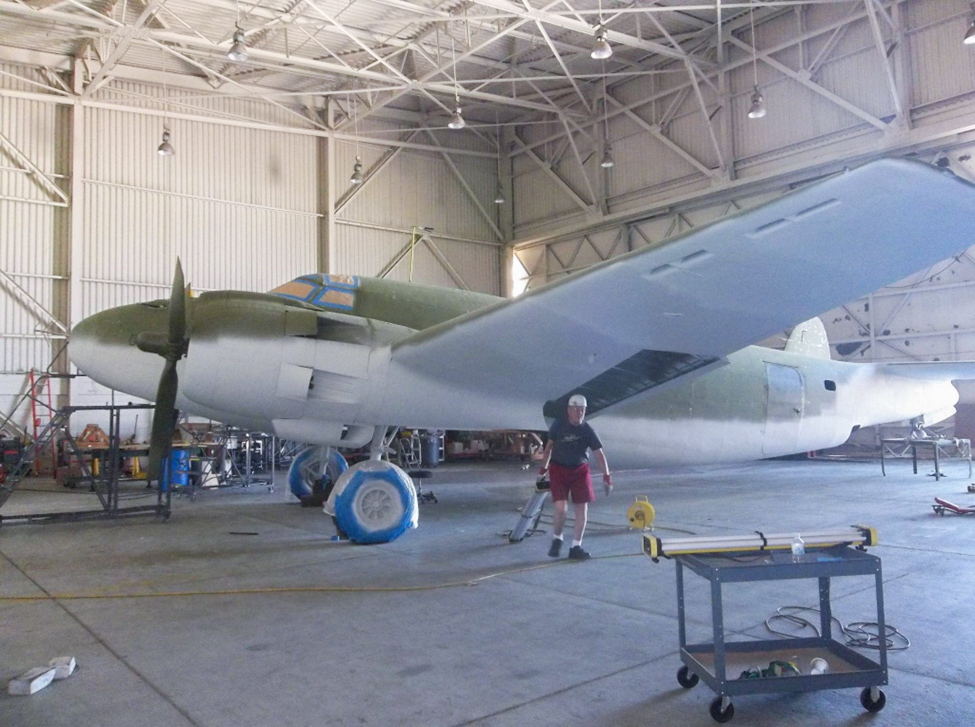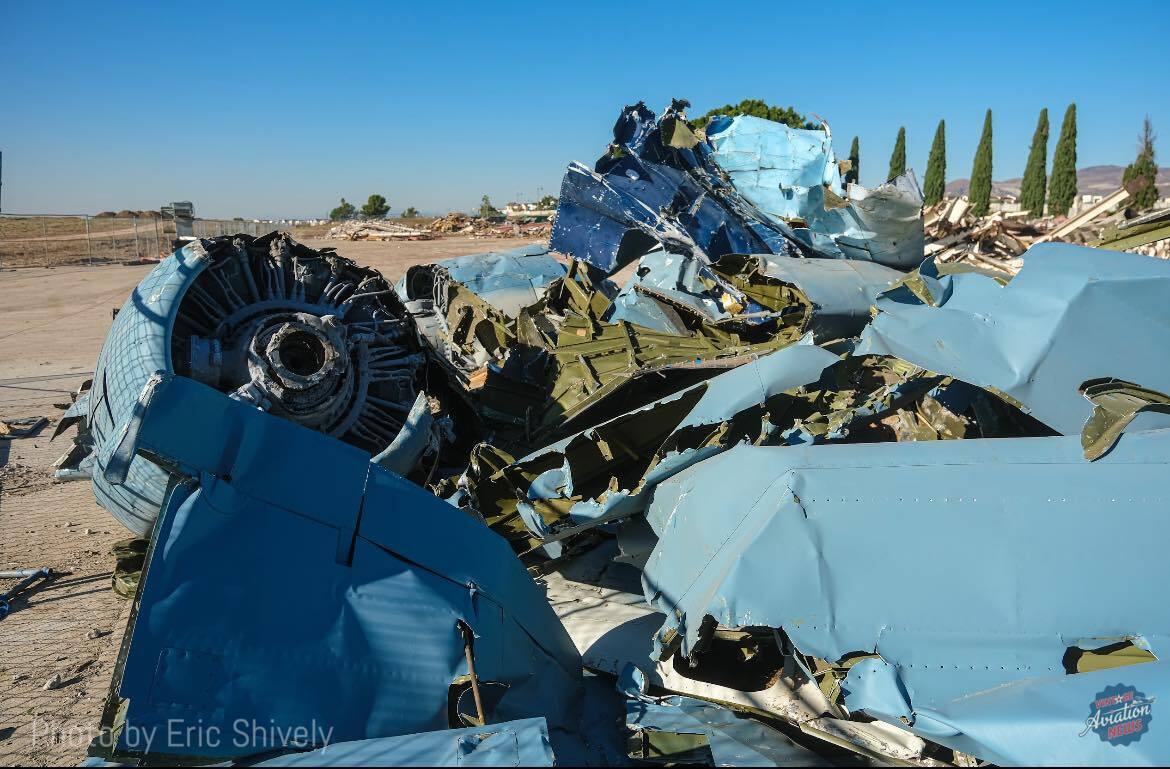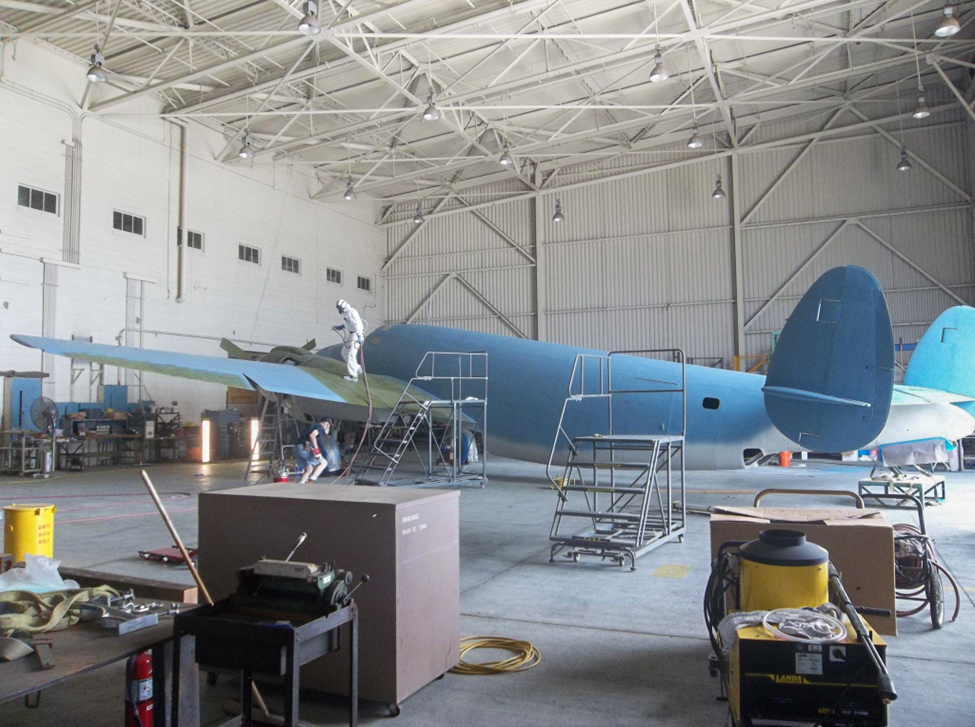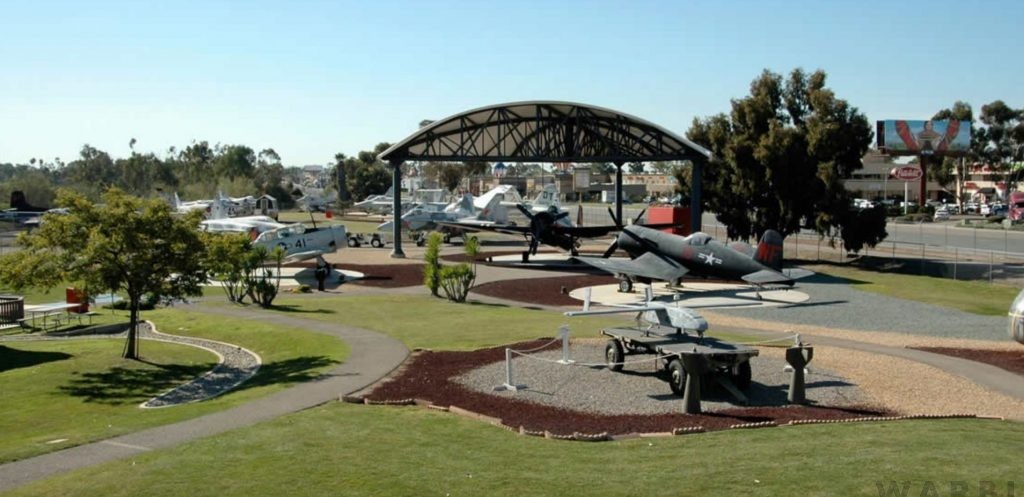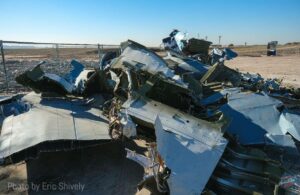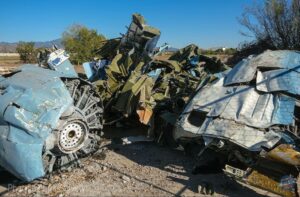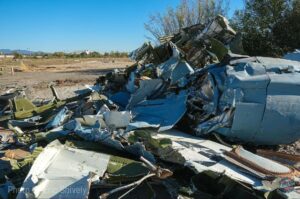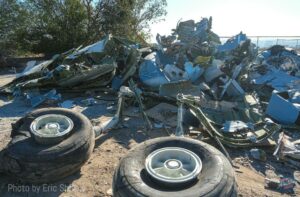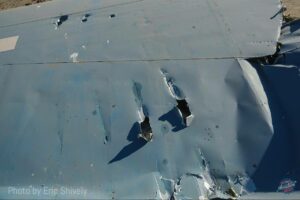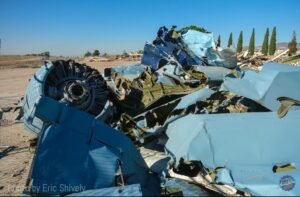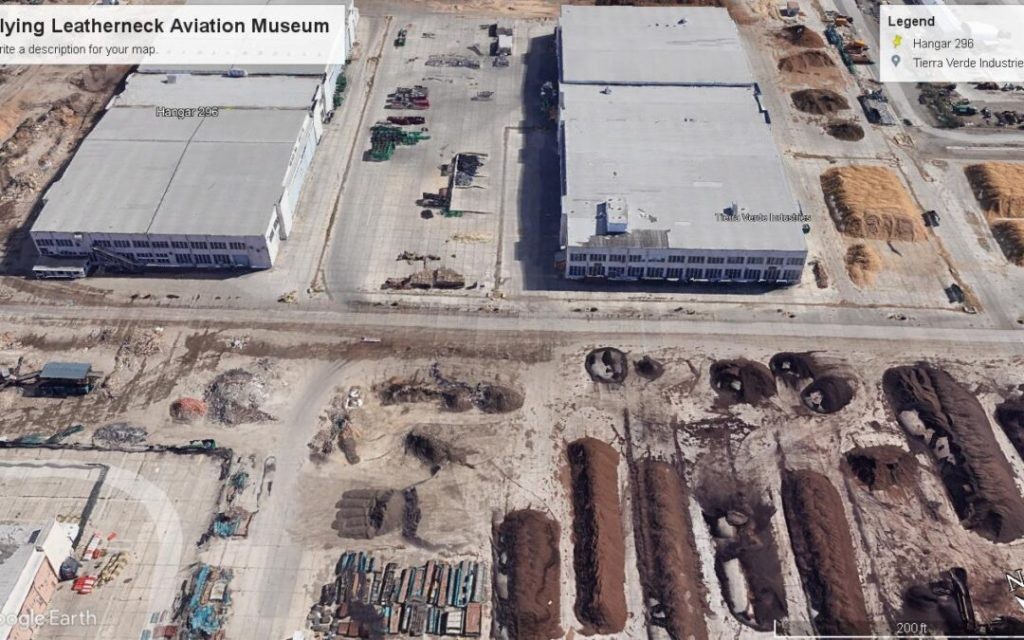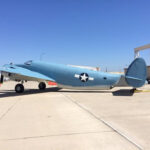By Adam Estes
A year ago, we reported on the efforts undertaken by the city of Irvine, California’s efforts to acquire and restore a WWII-veteran Lockheed PV-1 Ventura patrol bomber, Bureau Number (BuNo) 33327 (The City of Irvine’s Lockheed PV-1 Ventura | Vintage Aviation News (vintageaviationnews.com)). To summarize, the aircraft had been stationed with the Royal Canadian Air Force (RCAF) at RCAF Terrace Station on Terrace Island, British Columbia before returning to the United States and was converted into a Howard 350 executive transport, and after a series of owners, was damaged by Hurricane Katrina at New Orleans Lakefront Airport. Shortly after this, the city of Irvine purchased the former bomber in 2008 as part of the development of a museum on the ground of the former Marine Corps Air Station El Toro, which is now the site of the Orange County Great Park, a multi-purpose development for housing, public parks, entertainment, and galleries for arts and culture.
However, the city also purchased two WWII training aircraft in the form of a North American SNJ-5 Texan (BuNo 43921 – formerly AT-6D 42-88402) and a Naval Aircraft Factory N3N-3 (BuNo 04425), with the intention of these aircraft being placed inside a museum dedicated to the military aviation history of the site, and as a tribute to local veterans, many of whom once served at El Toro during their time in the USMC. Over the next seven years, from 2008 to 2015, a dedicated team of restorers worked on the Ventura using Hangar 114 as their main restoration facility. In 2015, however, work was halted on the project, and the aircraft was then kept in storage in another of the former El Toro hangars, this one being once used by Marine Medium Helicopter Squadron 268 (HMM-268; the Red Dragons).
Sadly, the old Ventura was left to rot and collect dust in this hangar and was subject to vandalism by trespassers. All the way, new housing, schools, and parks were being constructed near the abandoned hangars off Cadence. In 2022, the city of Irvine and the Great Park council announced the demolition of some of the abandoned Marine infrastructure remaining on the site. In all public announcements, no mention was given of the status or future of the Ventura in the old HMM-268 hangar. There was some hope that the Ventura would be saved when the Flying Leatherneck Aviation Museum joined the picture.
Originally founded as the El Toro Historical Center and Command Museum at MCAS El Toro in 1989, the closure of MCAS El Toro in 1999 would see the collection moved to MCAS Miramar, just north of San Diego, would it would operate as the Flying Leatherneck Aviation Museum (FLAM) until 2021, when budget cuts forced the Marine-funded museum to close, and for some of its aircraft to find new homes at separate museums across the country. But luck and public support was on the Flying Leatherneck Historical Foundation’s side as they reached an agreement with local public officials for the museum to return to the site of MCAS El Toro, taking up the old Marine Air Group 46 (MAG-46) hangars, not far from the two training aircraft at Hangar 244. As of now, the MAG-46 hangars (Hangars 296 and 297) are being decontaminated from the decades-worth of chemicals from the base’s active days as the surrounding buildings have been demolished by contractors from the city. As author of the previous Ventura article, I reached out to retired Brigadier General Michael Aguilar, CEO of the Flying Leatherneck Aviation Museum for comments about the Ventura, and he replied that it was his hope that the museum foundation could work with the city and park councils for them to either loan or donate the aircraft to the museum, especially since the former HMM-268 hangar was only a mile from the MAG-46 hangars that were reserved for the (FLAM).
But this very month (November 2023), contractors at Unlimited Environmental Inc were hired by the park and city councils to demolish the old buildings at Cadence and Pusan Way. Among these was the HMM-268 hangar, and infuriatingly, PV-1 BuNo 33327 was scrapped on site, and its remains were trucked away, along with the remains of the old buildings. Nothing but the concrete foundation and small piles of rubble remain. To add insult to injury, General Aguilar and the museum foundation were not informed until after the fact that the Ventura had been scrapped. The site of the old hangars and of the PV-1 Ventura are to be slated for a new library and an arboretum, which will be expected to be completed within the next couple of years.
Perhaps the greatest source of frustration for those who played a role in the story of PV-1 BuNo 33327, which had so dutifully served the Allies in WWII, had soldiered on until the hands of Mother Nature grounded her, and then to be shipped across the country to be restored by a passionate team largely made of volunteers, only for the volunteers to be dismissed is the fact that the city council, park officials, and developers allowed the aircraft and the hangar it was in to be neglected and to deteriorate to a point that they considered this aircraft which had been intended for public display worthless to the point that no objections were raised to its destruction at the hands of contractors who saw its destruction as just another day’s work.
As of now, the Flying Leatherneck Aviation Museum is preparing to move its fleet up Interstate 5 back to Irvine following the modernizations to accommodate museum-goers, with the museum hoping to open its doors by 2025. Let’s just hope that the city planners and developers don’t have anything to say about the treatment of the incoming aircraft.







